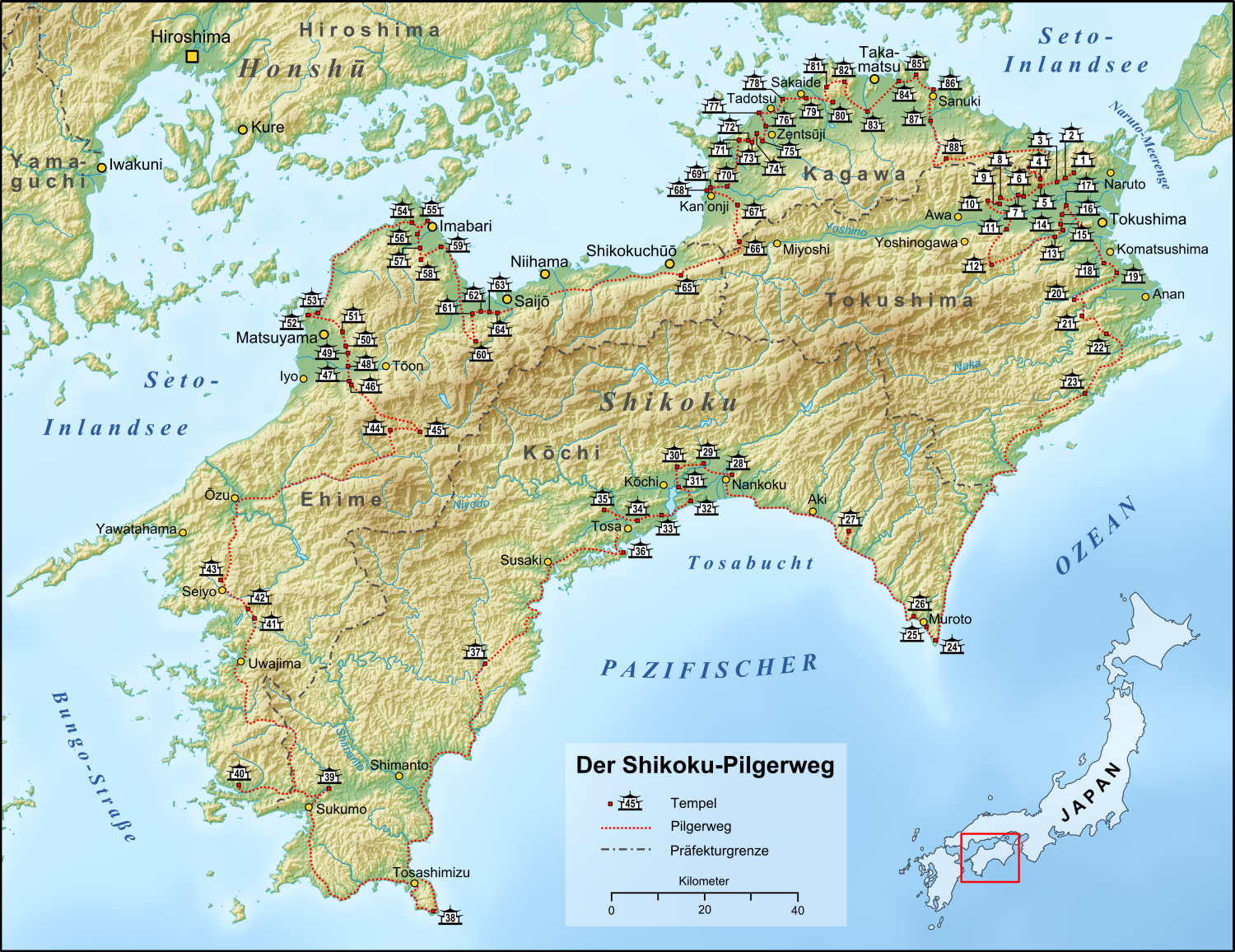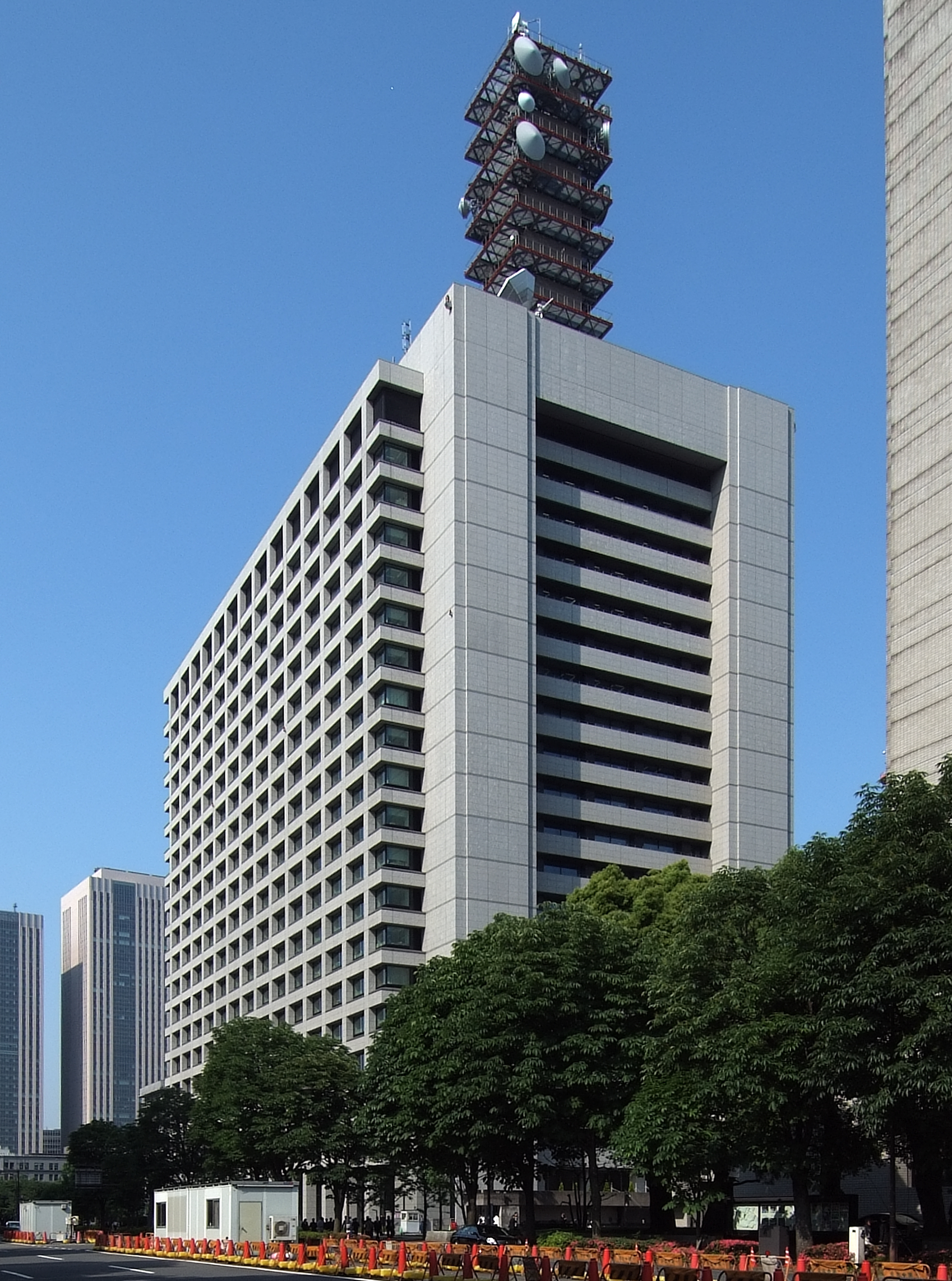|
Kotoden-Shido Station
is a passenger railway station located in the city of Sanuki, Kagawa, Japan. It is operated by the private transportation company Takamatsu-Kotohira Electric Railroad (Kotoden) and is designated station "S15". Lines Kotoden-Shido Station is the eastern terminus of the Kotoden Shido Line and is located 12.5 km from the opposing terminus of the line at Kawaramachi Station. Layout The station consists of a single deadheaded island platform, but basically only one track on the south side is used. The north side is shortened by a connecting corridor from the platform to the night duty facility, so even with a 2-car train, the driver's cab door protrudes from the platform. The station is staffed. Adjacent stations History Kotoden-Shido Station opened on November 18, 1911 as Shido Station on the Tosan Electric Tramway. At that time, it was 50 meters west of the current location. It was relocated to its current location and renamed in May 1932. On November 1, 1943 it be ... [...More Info...] [...Related Items...] OR: [Wikipedia] [Google] [Baidu] |
Kotoden Logo V
, officially for short, is a transportation company in Kagawa Prefecture, on the island of Shikoku, Japan. With headquarters in Takamatsu, the company operates three passenger railway lines, as well as bus subsidiaries. It was established on 1 November 1943. In 2021, it reported sales of ¥2,881,000,000 with a capitalization of ¥250,000,000. History The company traces its origins to 1909, when was founded. This company opened the Nagao line on 30 April 1912 between Dehare (出晴) (close to the present Kawaramachi Station) and Nagao Station. The line was originally 1,067 mm (3 ft 6 in) gauge and electrified at 600V DC, but it was regauged to 1,435 mm (4 ft 8+1⁄2 in) in June 1945, and the overhead line voltage was raised to 1500V DC in December 1976. In 1910, was established, and opened the Shido line on 18 November 1911 between Imabashi and Shido Station (now Kotoden-Shido). The line was electrified at 600V DC, and increased to 1500V DC in August 196 ... [...More Info...] [...Related Items...] OR: [Wikipedia] [Google] [Baidu] |
Japan
Japan is an island country in East Asia. Located in the Pacific Ocean off the northeast coast of the Asia, Asian mainland, it is bordered on the west by the Sea of Japan and extends from the Sea of Okhotsk in the north to the East China Sea in the south. The Japanese archipelago consists of four major islands—Hokkaido, Honshu, Shikoku, and Kyushu—and List of islands of Japan, thousands of smaller islands, covering . Japan has a population of over 123 million as of 2025, making it the List of countries and dependencies by population, eleventh-most populous country. The capital of Japan and List of cities in Japan, its largest city is Tokyo; the Greater Tokyo Area is the List of largest cities, largest metropolitan area in the world, with more than 37 million inhabitants as of 2024. Japan is divided into 47 Prefectures of Japan, administrative prefectures and List of regions of Japan, eight traditional regions. About three-quarters of Geography of Japan, the countr ... [...More Info...] [...Related Items...] OR: [Wikipedia] [Google] [Baidu] |
Railway Stations In Japan Opened In 1911
Rail transport (also known as train transport) is a means of transport using wheeled vehicles running in railway track, tracks, which usually consist of two parallel steel railway track, rails. Rail transport is one of the two primary means of land transport, next to road transport. It is used for about 8% of passenger and rail freight transport, freight transport globally, thanks to its Energy efficiency in transport, energy efficiency and potentially high-speed rail, high speed.Rolling stock on rails generally encounters lower friction, frictional resistance than rubber-tyred road vehicles, allowing rail cars to be coupled into longer trains. Power is usually provided by Diesel locomotive, diesel or Electric locomotive, electric locomotives. While railway transport is capital intensity, capital-intensive and less flexible than road transport, it can carry heavy loads of passengers and cargo with greater energy efficiency and safety. Precursors of railways driven by human or an ... [...More Info...] [...Related Items...] OR: [Wikipedia] [Google] [Baidu] |
Shikoku Pilgrimage
The or is a multi-site pilgrimage of 88 temples associated with the Buddhist monk Kūkai (''Kōbō Daishi'') on the island of Shikoku, Japan. A popular and distinctive feature of the island's cultural landscape, and with a long history, large numbers of pilgrims, known as , still undertake the journey for a variety of ascetic, pious, and tourism-related purposes. The pilgrimage is traditionally completed on foot, but modern pilgrims use cars, taxis, buses, bicycles, or motorcycles, and often augment their travels with public transportation. The standard walking course is approximately long and can take anywhere from 30 to 60 days to complete. In addition to the 88 "official" temples of the pilgrimage, there are 20 ''bekkaku'' (別格) temples, which are officially associated with the Shikoku Pilgrimage (and hundreds more ''bangai'' (番外) temples, simply meaning "outside the numbers," which are not considered part of the official 88). To complete the pilgrimage, it ... [...More Info...] [...Related Items...] OR: [Wikipedia] [Google] [Baidu] |
Shido-ji
Shido-ji (志度寺) is a Buddhist temple in Sanuki, Kagawa, Japan. It is the 86th site of the Shikoku Pilgrimage. History The temple was founded in 625, when Chikako, a member of a marine group, sculpted a statue of Ekādaśamukha on a sacred tree and built a temple. Tomb of Ama The Tomb of Ama is a tomb related to a tragic story about the Fujiwara no Fusasaki Fujiwara no Fusasaki (藤原 房前, 681 – May 25, 737) was a Japanese court noble who was a member of the Fujiwara clan and the founder of the Hokke House of the Fujiwara.Nussbaum, Louis-Frédéric. (2005). "Fujiwara no Fusasaki" in ; Brinkl ... family. References Buddhist temples in Tokushima Prefecture Buddhist pilgrimage sites in Japan {{Japan-Buddhist-temple-stub ... [...More Info...] [...Related Items...] OR: [Wikipedia] [Google] [Baidu] |
Island Platform
An island platform (also center platform (American English) or centre platform (British English)) is a station layout arrangement where a single platform is positioned between two tracks within a railway station, tram stop or transitway interchange. Island platforms are sometimes used between the opposite-direction tracks on twin-track route stations as they are cheaper and occupy less area than other arrangements. They are also useful within larger stations, where local and express services for the same direction of travel can be accessed from opposite sides of the same platform instead of side platforms on either side of the tracks, simplifying and speeding transfers between the two tracks. The historical use of island platforms depends greatly upon the location. In the United Kingdom the use of island platforms on twin-track routes is relatively common when the railway line is in a cutting or raised on an embankment, as this makes it easier to provide access to the platf ... [...More Info...] [...Related Items...] OR: [Wikipedia] [Google] [Baidu] |
Kawaramachi Station (Kagawa)
is a railway station located in the city of Takamatsu, Kagawa, Japan. It is operated by the private transportation company Takamatsu-Kotohira Electric Railroad (Kotoden) and has station designations "K02", "N02" and "S00". Lines Kawaramachi Station is served by the Kotoden Kotohira Line, Kotoden Nagao Line, and Kotoden Shido Line. It forms the terminus of the 14.6 kilometer Kotoden Nagao Line to and the 12.5 kilometer Kotoden Shido Line to , although many Nagao Line services start and terminate at Takamatsu-Chikkō Station. It is located 32.9 km from the opposing terminus of the Kotohira line at Kotoden-Kotohira Station. Layout The station is an elevated station integrated with the Kotoden Kawaramachi Building completed in 1996, and the Kotohira Line and Nagao Line platforms are located on the first floor of the building. The Kotohira Line has one island platform and two tracks (platforms 1 and 2), and the Nagao Line has one side platform A side platform (also known ... [...More Info...] [...Related Items...] OR: [Wikipedia] [Google] [Baidu] |
Sanuki, Kagawa
is a Cities of Japan, city in Kagawa Prefecture, Japan. , the city had an estimated population of 46,016 in 20847 households and a population density of and a population density of 290 persons per km2. The total area of the city is . Geography Sanuki is located in northeast Kagawa Prefecture, on the island of Shikoku, facing the Seto Inland Sea to the north, and the Sanuki Mountains to the south. The city lies just east of the prefecture capital, Takamatsu. Neighbouring municipalities Kagawa Prefecture *Higashikagawa, Kagawa, Higashikagawa *Miki, Kagawa, Miki *Takamatsu, Kagawa, Takamatsu Tokushima Prefecture * Awa, Tokushima , Awa *Mima, Tokushima , Mima Climate Sanuki has a humid subtropical climate (Köppen ''Cfa'') characterized by warm summers and cool winters with light snowfall. The average annual temperature in Sanuki is 15.5 °C. The average annual rainfall is 1606 mm with September as the wettest month. The temperatures are highest on average in Januar ... [...More Info...] [...Related Items...] OR: [Wikipedia] [Google] [Baidu] |
Takamatsu-Kotohira Electric Railroad
, officially for short, is a transportation company in Kagawa Prefecture, on the island of Shikoku, Japan. With headquarters in Takamatsu, the company operates three passenger railway lines, as well as bus subsidiaries. It was established on 1 November 1943. In 2021, it reported sales of ¥2,881,000,000 with a capitalization of ¥250,000,000. History The company traces its origins to 1909, when was founded. This company opened the Nagao line on 30 April 1912 between Dehare (出晴) (close to the present Kawaramachi Station) and Nagao Station. The line was originally 1,067 mm (3 ft 6 in) gauge and electrified at 600V DC, but it was regauged to 1,435 mm (4 ft 8+1⁄2 in) in June 1945, and the overhead line voltage was raised to 1500V DC in December 1976. In 1910, was established, and opened the Shido line on 18 November 1911 between Imabashi and Shido Station (now Kotoden-Shido). The line was electrified at 600V DC, and increased to 1500V DC in August 196 ... [...More Info...] [...Related Items...] OR: [Wikipedia] [Google] [Baidu] |
Railway Station
Rail transport (also known as train transport) is a means of transport using wheeled vehicles running in railway track, tracks, which usually consist of two parallel steel railway track, rails. Rail transport is one of the two primary means of land transport, next to road transport. It is used for about 8% of passenger and rail freight transport, freight transport globally, thanks to its Energy efficiency in transport, energy efficiency and potentially high-speed rail, high speed.Rolling stock on rails generally encounters lower friction, frictional resistance than rubber-tyred road vehicles, allowing rail cars to be coupled into longer trains. Power is usually provided by Diesel locomotive, diesel or Electric locomotive, electric locomotives. While railway transport is capital intensity, capital-intensive and less flexible than road transport, it can carry heavy loads of passengers and cargo with greater energy efficiency and safety. Precursors of railways driven by human or an ... [...More Info...] [...Related Items...] OR: [Wikipedia] [Google] [Baidu] |
Ministry Of Land, Infrastructure, Transport And Tourism
The , abbreviated MLIT, is a ministry of the Japanese government.国土交通省設置法 , Ministry of Internal Affairs and Communications. It is responsible for one-third of all the laws and orders in Japan and is the largest Japanese ministry in terms of employees, as well as the second-largest executive agency of the Japanese government after the Ministry of Defense. The ministry oversees four external agencies including the , the |






